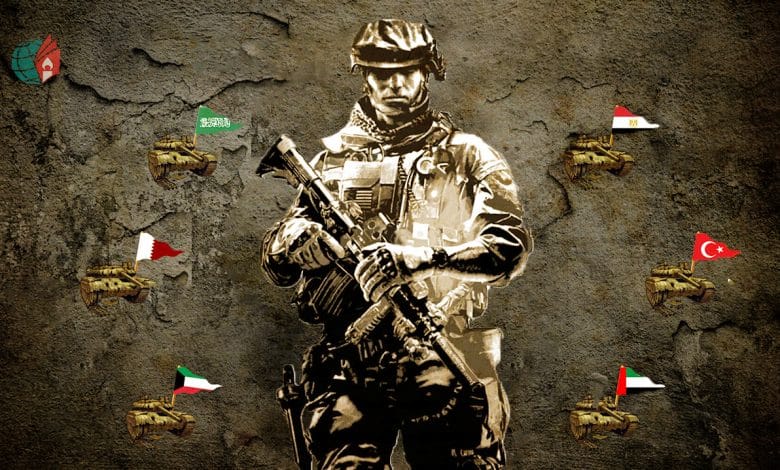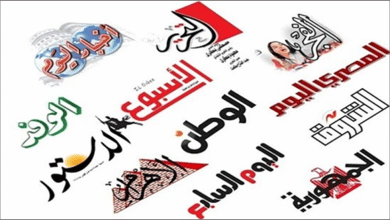
International Army Rankings: Criteria and Objectives
International Army Rankings
Some question the credibility of the reports that classify and rank armies from the strongest to the weakest, and the criteria on which they rely in light of the recent review of the Global Fire Power (GFP) which ranked Egypt in the ninth position out of 138 countries considered for the GFP annual review, holding a Power Index rating of 0.1872.
In these lines, we will attempt to provide answers for these questions:
First: The ranking criteria
The strength of armies is not only measured by the number of soldiers or the size of their military hardware, but it can be measured through many other indicators; however, such reports on ranking armies only focus on some of these indicators and overlook others. Among the most prominent indicators that these reports are working on are location, manpower, and the economic status of a country.
However, the Global Fire Power website ranks the 138 most powerful armies around the world, depending on the declared military power of countries, including the Ground Force, the Naval Force, and the Air Force, which means that such theoretical ranking of the strength of world armies may change when these armies engage in real wars.
Most of the military sites that rank armies rely on nine main indicators, namely:
1- Number of army combat troops
Among the army ranking criteria is the number of combatants in proportion to the total population of a country, but it is not a critical component of ranking, as the Chinese army is the largest in the world with 2.18 million soldiers, compared to the United States army that consists of 1.28 million soldiers, and yet it has been ranked third after the US and Russia.
2- Air Force
The air force indicator includes the total number of military aircraft that armies possess, the types of such aircraft, including fixed-wing aircraft, helicopters operating in all army branches, training aircraft, and military transport aircraft. According to the Global Fire Power review, military drones are not included in this indicator.
3- Ground Force
This indicator includes the number of tanks, especially major battle tanks with immense firepower; light tanks; anti-tank vehicles; armored personnel vehicles, armored fighting vehicles, MRAP anti-mine vehicles, missile launchers, and self-propelled guns.
4- Naval Power
The naval power of countries is measured through the number of naval military assets they possess, the types of vessels, as well as the level of armament and military technologies that these vessels have. War aircraft carriers, helicopter carriers, and submarines, both nuclear and conventional, are also among the weapons included in army force assessment.
5- Exercises
One of the indicators that the websites that periodically rank world armies depend on is the number of declared exercises of forces in various branches and formations of armies: ground, air, sea and air defense – without addressing the fighters’ real professional level and preparedness.
6- Natural Resources
Natural resources are among the most important factors that rankings of the army strength rely on, especially oil and natural gas, and rare minerals, because they secure the ability of armies to fight long-term wars.
7- Logistics
Major ports of coastal countries are strengths that enable these countries to provide supplies for armies in wartime and give them advantages over other countries. The possession of logistical support centers outside borders is also one of the biggest advantages that places armies in an advanced position in international rankings.
8- Economic Strength
The economic strength of a country is considered one of the most important elements in assessing the strength of armies, as it enables a country to provide its army with the most modern military equipment and afford for training professional forces to have the upper hand in time of war.
9- Location
The location of countries is important in both offensive and defensive wars, which makes it one of the most important criteria for assessing the strength of armies.
Second: What these reports neglect
The criteria and foundations that army ranking reviews rely on, including the recent Global Fire Power report, lack several significant factors, including:
1- The real professional and technical level of fighters: although many countries have the same weapons, but users of these weapons are not the same, with respect to the level of training and efficiency.
There is a disparity in the level of training between pilots of various countries, and even within the same country. Given that not all pilots are of the same level of competence and experience, the number of aircraft, even the most sophisticated ones, that countries have cannot be considered a determinant factor in ranking the strength of armies.
Although the Egyptian army has recently obtained sophisticated weapons, especially for the air force and navy, but the incidents of aircraft crashes have noticeably increased due to lack of proper training of pilots. Furthermore, the failure of the Egyptian army in the face of the armed insurgency in Sinai is attributed to lack of good training of soldiers, according to military experts.
2- The arms manufacturing capabilities differ from one country to another, and it is not logical in any way to compare between an arms producing country and an arms consuming country, as producing countries put restrictions on the export of weapons to other countries and as long as the state does not manufacture its arms, it will always be under the mercy of arms-producing countries even when using it. Also, the imported weapons may have varying capabilities from one country to another. For example, the F16 aircraft operating in the Egyptian Air Force are completely different from the F16 aircraft operating in the Israeli Air Force, and the same applies to the two Mistral helicopter carriers obtained by the Egyptian Navy from France in 2016 lacking related equipment and helicopters onboard the two ships, which prompted Egypt to obtain these equipment from Russia.
The Egyptian army was ranked 9 of 138 out of the countries considered for the annual GFP review in 2020 despite the fact that the Egyptian military industrialization is currently at its lowest levels. According to the Stockholm International Peace Research Institute (SIPRI), Egypt became one of the major arms importers between 2008-2012 and 2013-2017. Meanwhile, the Turkish army was ranked 11 of 138 out of the countries considered for the annual GFP review in 2020 although Ankara is an arms manufacturing country; and according to SIPRI, Turkey is among the three largest emerging countries in arms production and export.
3- The technical capabilities of armies is also an indicator that does not appear in these reports as it is difficult to measure. Suppose there are two countries that import the same weapons: while one of them maintains and develops the weapons it has obtained at home, the other country only buys weapons even if they are inappropriate for the military operations it is engaging in, and does not undertake the required maintenance or development of these weapons. Ironically, we may find, that the latter has an advanced position in such rankings, simply because it has purchased more weapons and spent more money. In addition, the authors of these reports do not enter military units to explore the validity of these weapons.
4- The successes or failures of armies are manifested through the military operations that they carry out. The Egyptian army, for example, says it is engaging in military operations against “terrorism in the Sinai” since 2011 until now and has carried out seven military operations there, the last of which was announced in the first quarter of 2018, the comprehensive Operation Sinai 2018, and was supposed to have taken three months to free Sinai from “terrorism” according to Al-Sisi’s statement at the time. However, this operation is still going on without achieving any real military successes on the ground, amid major casualties and losses to the Egyptian army, whether at the level of individuals or equipment.
5- The fighting doctrine is highly important for any army worldwide. However, it is not measured in these reports, despite the fact that the soldier’s belief in the cause for which he fights makes him fight more fiercely, as it happened in the Vietnam-American war when the fighting doctrine of the Vietnamese and their belief in the justice of their cause made them ultimately win the war and drive the US out of Vietnam. Also, the morale of army officers and soldiers is one of the most powerful weapons, yet it is missing in these international reports.
6- These reports deal only with the apparent manifestations of army power, which makes their outcome inaccurate, because confidentiality, especially with respect to the combat readiness, is one of the most important factors in military and security action.
Conclusion
Reports ranking world armies are lacking many aspects and accordingly present inaccurate results. Therefore, various media outlets, specifically in the Middle East, exploit and politicize such reports in order to amplify and dramatize the capabilities and strength of one army and underestimate the strength and capabilities of another, within the framework of the so-called “psychological warfare” which significantly affects the public opinion. Although the reports on ranking armies, including the Global Fire Power and others, are based on inadequate indicators, but they provide a framework that can be built upon by research centers that seek to produce objective rankings.
لقراءة النص بصيغة PDF إضغط هنا.

